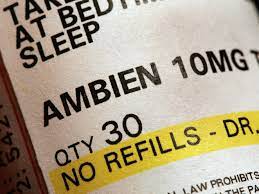Can I take 2 Ambien 10mg Pills?

When one seeks medical attention, the first and foremost task handed to the physician is to assess the patient’s medical history and then prescribe an appropriate personalized medical regimen. Be it infectious diseases, chronic conditions, or metabolic disorders, prescription of medication is only the first step of proceedings. It is equally upon the patient, as much as it is upon the doctor and healthcare professionals examining him, to stick to his or her prescribed routine and get a follow-up check done on a regular basis.
The dose is the amount of drug taken at any one time. This can be expressed as the weight of the drug (e.g. 250 mg), the volume of drug solution (e.g. 10 mL, 2 drops), the number of dosage forms (e.g. 1 capsule, 1 suppository), or some other quantity (e.g. 2 puffs). The dosage regimen is the frequency at which the drug doses are given. Examples include 2.5 mL twice a day, one tablet three times a day, and one injection every four weeks.
The total daily dose is calculated from the dose and the number of times per day the dose is taken while the optimal dosage is the dosage that gives the desired effect with minimum side effects. There are many factors taken into consideration when deciding the dose of a drug – including the age of the patient, weight, sex, ethnicity, liver and kidney function, and whether the patient smokes. Other medicines may also affect the drug dose. Adherence and compliance are pivotal in ensuring an improved health outcome for the patient especially if he is suffering from a chronic condition and needs prolonged medical attention.
What is Ambien?
Ambien (zolpidem) is a sedative, also called a hypnotic. Zolpidem affects chemicals in the brain that may be unbalanced in people with sleep problems (insomnia).
Ambien is used to treat insomnia. The immediate-release tablet is used to help you fall asleep when you first go to bed. The extended-release form, Ambien CR, has a first layer that dissolves quickly to help you fall asleep, and a second layer that dissolves slowly to help you stay asleep.
But about 50 to 70 million adults in the United States experience sleep deprivation or a sleep disorder. And close to 38 million of them use Ambien in order to achieve better sleep. The drug has helped many — some with chronic conditions, others not — improve their sleep patterns.
However, it also comes with a host of known side effects, including decreased awareness, hallucinations, changes in behavior, memory problems, sleepwalking, sleep-eating (and cooking), and even sleep-driving.
How is Ambien taken?
Ambien is prescribed for the short-term treatment of insomnia as a sleep aid to induce sleep. Ambien CR is also prescribed for the short-term treatment of insomnia but is primarily used in people who have trouble falling asleep and staying asleep through the night. When prescribing Ambien or Ambien CR, healthcare providers will use the lowest possible dose so that people can function in the morning. The higher recommended doses will increase next-day impairment.
| Ambien dosage chart | |||
| Indication | Starting dosage | Standard dosage | Maximum dosage |
| Insomnia | 5 mg tablet taken immediately before bedtime for women or 5 or 10 mg tablet taken immediately before bedtime for men | 5–10 mg tablet taken immediately before bedtime | 10 mg per day immediately before bedtime |
| Ambien CR dosage chart | |||
| Ambien CR dosage chart | |||
| Indication | Starting dosage | Standard dosage | Maximum dosage |
| Insomnia | 6.25 mg tablet taken immediately before bedtime for women or 6.25 or 12.5 mg tablet taken immediately before bedtime for men | 6.25 or 12.5 mg tablet taken immediately before bedtime | 12.5 mg per day immediately before bedtime |
| Indication | Starting dosage | Standard dosage | Maximum dosage |
| Insomnia | 6.25 mg tablet taken immediately before bedtime for women or 6.25 or 12.5 mg tablet taken immediately before bedtime for men | 6.25 or 12.5 mg tablet taken immediately before bedtime | 12.5 mg per day immediately before bedtime |
Source: Ambien-Daily Med, Ambien CR-Daily Med
Ambien dosage for children
The U.S. Food and Drug Administration (FDA) has not approved Ambien or Ambien CR for use in anyone younger than 18. In very rare cases, healthcare providers may use zolpidem off-label to improve awareness in children in a vegetative state due to a brain injury.
Can I take 2 Ambien 10mg?
No, taking take 2 Ambien 10mg will result in an overdose. The recommended maximum daily dose for adults is 10 mg to be taken immediately at bedtime. Ambien can be a deceptively problematic drug and can lead to overdose when misused.
An overdose of Ambien can be fatal, especially when it is taken together with other medications that can cause drowsiness. Overdose symptoms may include severe drowsiness, confusion, shallow breathing, feeling light-headed, fainting, or coma. Avoid taking Ambien during travel, such as sleeping on an airplane.
In case of overdose, call the poison control helpline at 1-800-222-1222. Information is also available online at https://www.poisonhelp.org/help. If the victim has collapsed, had a seizure, has trouble breathing, or can’t be awakened, immediately call emergency services at 911.





